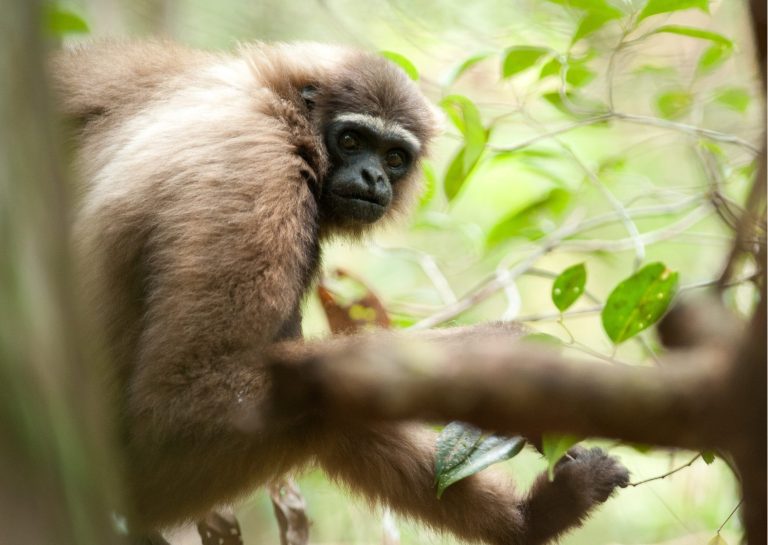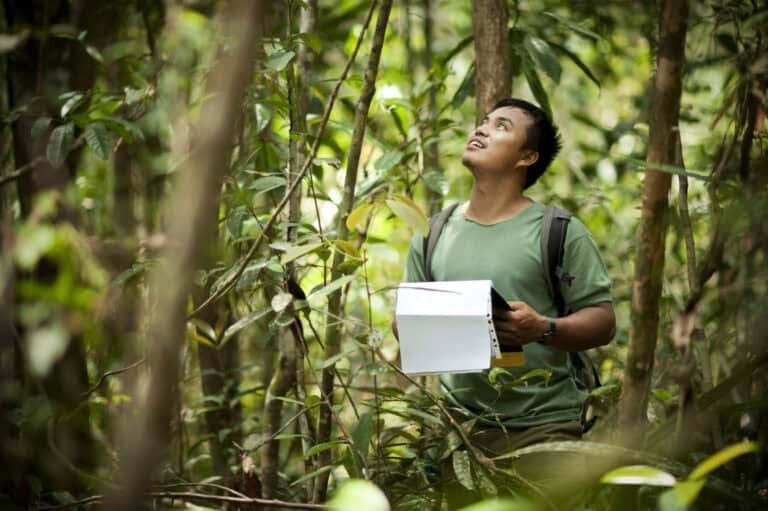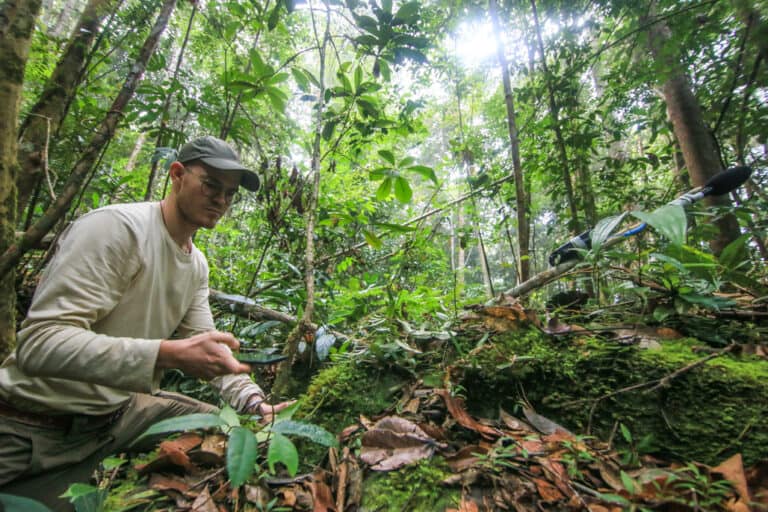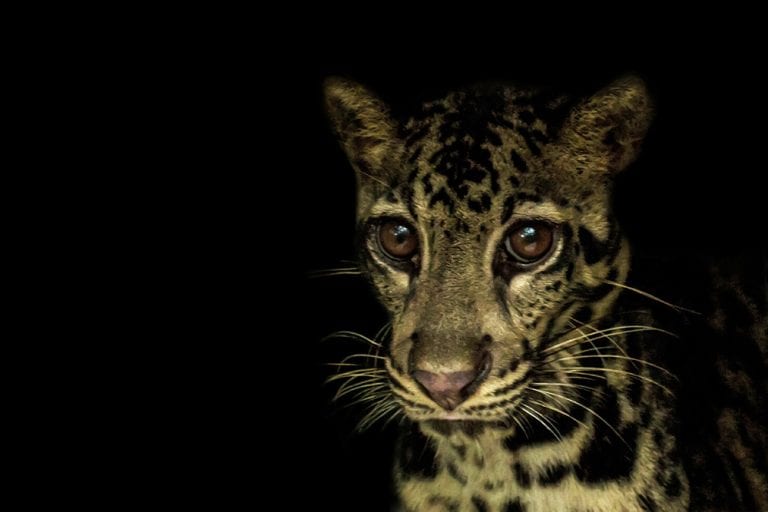Joey Markx, OuTrop Orangutan Researcher, is back in the Sabangau Forest after completing his undergraduate research on orangutan gestural communication in 2014. He has returned to continue this exciting project. Here, he explains all…
Communication in humans is mostly based on speech and the language that we use. No other animal has evolved this type of communication. When studying the evolution of language, it is therefore interesting to study communication in our closest relatives, primates and more specifically apes. Researchers have found that gestural communication in primates actually has more similarities with human language than vocal communication. Gestures are used in different contexts, voluntarily, with intent, and audience comprehension is also taken into account. It’s a means of communication through bodily movements that signal particular messages, for example if an infant begs for food by holding a scooped hand in front of the mother’s mouth.
Apes are also able to learn many new gestures, which has been demonstrated by chimpanzees, bonobos, gorillas and orangutans ability to learn American Sign Language. A female chimpanzee even taught her infant to communicate using many of the taught signals!
Studying gestural communication might therefore reveal important information about the evolution of human language. Did human language evolve from gestures?
| Female orangutan, Isabella, in Sabangau. Photo by Bernat Ripoll/OuTrop |
Gestural communication research has been carried out for most ape species in the wild and in captivity, but not yet for wild orangutans. It is important to study wild ape communication, because their social and ecological environment is different from captive populations (there is also less interaction with people). Orangutans are the most solitary ape species in the wild, but they are often housed in groups in zoos, resulting in more communication and opportunities for social learning.
Because of the semi-solitary lifestyle in the wild, my research focusses on mother and infant orangutans. The mother-infant bond is very strong and lasts many years, so communication takes place on a daily basis. So, I follow wild orangutans for up to 12 hours a day to video record their social interactions, as well as recording their vocalisations.
 |
| Mother (Indy) and infant orangutan (Icarus) feeding in the same tree. It is moments like this when the ‘food beg’ gesture might occur. Photo by Joey Markx/OuTrop |
By constructing a repertoire of gestures, I hope to be able to find out how and when gestures are used and how orangutans acquire them. I will compare gestural communication with vocal communication and will compare my findings with captive orangutan studies, as well as studies on the other great ape species (chimpanzees, gorillas and bonobos).
Conducting this study in the wild, and especially in a peat-swamp forest, is hard work, because visibility of the orangutans can be low due to thick vegetation. It will take a long time before a good understanding of gesture types is acquired, but I am up for this challenge!
 |
| Ready for the Sabangau Forest! Photo by Joey Markx/OuTrop |
I would like to thank Stichting Het Kronendak for funding this project.












